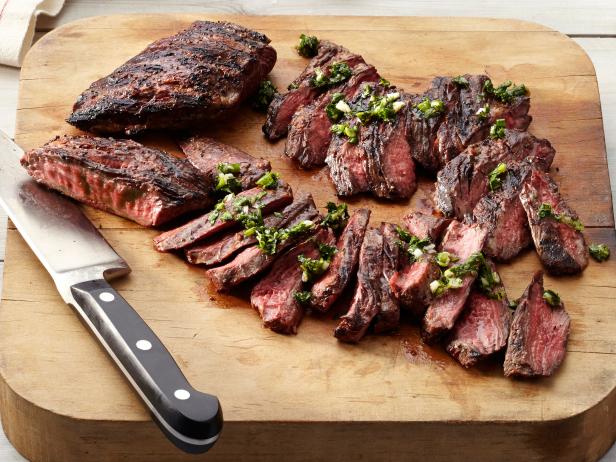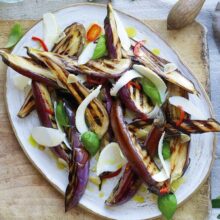Tips For Grilling Steaks

If you are new to grilling, thick steaks can be a great way to get started. Thicker steaks are easier to control than thinner ones and are more forgiving for beginners. One-inch steaks are notoriously difficult to get right, so it’s best to add at least 1/2 inch of extra thickness when learning how to cook a steak. You can also opt to leave the bone in for a truly impressive presentation.
Preparing steaks for grilling
When grilling steaks, the first thing to do is prepare the meat. It is important to allow the meat to come to room temperature before grilling, and then remove excess fat. You should have about 1/4 inch of fat on the steak, preferably all around. Next, place the steak on the cooler part of the grill. Cover it with the lid. As the steak cooks, hot air will circulate around the meat, gently warming it. This creates a mini oven for your steak.
Depending on the cut of the steak, the thickness and marbling of the meat are important. Choose thicker cuts if you are looking for maximum juiciness. Tougher cuts also tend to stand up well to marinating. When marinating a steak, remember to keep in mind that you do not want to use too much salt, as this will draw out moisture from the meat. But remember, a small amount of salt is better than too much, as it will seal in the juices while grilling.
Using a brush with melted butter before grilling is another way to add moisture to the meat. It will also prevent the steak from sticking to the grill. While your steaks are resting, sprinkle them generously with salt and pepper to taste. Use a gas grill or charcoal grill, but be sure to coat the grill with olive oil to prevent sticking.
Leaving meat out for an hour before grilling will not make the meat cooked through evenly. It will also become too warm inside and may cause a health hazard. It will also reduce the margin for error.
Marinating steaks
If you’re a fan of steak, marinating them for grilling will improve the flavor and tenderness of the meat. Most marinades contain some salt, and salt draws moisture into the meat through osmosis, which draws out the flavor of the marinade. Some marinades also contain herbs and spices to enhance the flavor.
Many steak marinades contain vinegar and other salty ingredients, but you can also use balsamic vinegar instead. You can also add olive oil or honey, or Italian seasoning. Then, pour the mixture over the steak and allow it to marinate for two hours to eight hours. The longer you marinate the meat, the more tender it will be.
You can use an instant read thermometer to check the steak’s doneness. If the steak is not fully cooked, you may have to cut it before serving. This can result in the loss of juices. In addition, the steaks should be brought to room temperature before grilling. By doing so, you’ll be sure that the steaks are evenly cooked.
Make sure to take the steak out of the fridge about thirty minutes before grilling. Then, place the steak on the grill grates. Flip it once during the cooking process, to make sure they are cooked through. Use a thermometer or a hand temperature test to test whether they’re cooked. Once cooked, the steak should be rested for at least five minutes before serving.
A marinade can add an extra layer of flavor to a steak. Marinating steaks in a sauce or brine adds flavor and tenderness. Marinate the meat in a marinade with herbs and spices for flavor. For example, Worcestershire sauce is an excellent marinade for a flank steak. It’s also a good idea to marinate flank steak for a few hours before grilling.
Using a meat thermometer to check for doneness
The meat thermometer is a simple and effective tool for testing doneness of meat. Using it can help you determine whether your steak is rare or well done. The ideal doneness for a steak is 155 degrees Fahrenheit. It is important to note that steaks can be tough to cook perfectly, so it is important to check for doneness often. A meat thermometer can be inexpensive and easy to use, so you can buy one and begin grilling your steak.
Before you begin grilling, it is a good idea to take your beef out of the fridge about 20 minutes before cooking. Then, leave it on the counter for a few minutes to bring it to room temperature. You must remember that raw meat can contain harmful bacteria that can lead to food-borne illnesses. In addition, a meat thermometer can leave a hole in the meat, and it may leak juices.
The best way to check the doneness of meat is to insert the meat thermometer into the thickest part of the meat, without touching any bone or fat. It is important to check the meat temperature at least five degrees below the final temperature, as the meat will continue to cook for a few more degrees at this point.
Another way to check the doneness of a steak is to cut it open. This will allow the juices to drain out of the meat and may also lead to overcooking the steak. If you do not own a meat thermometer, you can still use your hands to determine the doneness of your steak. While the results will not be as accurate as a thermometer, it is better than nothing.
Adding sweetener without adding sugar
Adding sweetener to steak recipes can enhance the flavor and texture of your steaks without increasing their salt and acidity content. Sugar is a natural tenderizer and will help the meat retain moisture. Many steak recipes use it to create a slightly sweet and crispy crust.
When you marinate your steak, you need to make sure it is about half oil and half marinade. You should aim for a neutral oil if you want a subtle flavor and don’t want the meat to taste like oil. If you want a more intense flavor, try infused oils or use several oils in a single marinade. If you prefer a stronger flavor, you can also add more oil during cooking.
Adding sugar may make a dish too sweet. However, you can use a sweetener that doesn’t have any calories or is low in carbohydrates. You can use stevia leaf extract instead of sugar, which adds a tiny amount of sugar.
If you don’t want to use brown sugar, you can substitute maple syrup or xylitol. These sweeteners are available in large light-brown crystals. They are an excellent substitution for brown sugar. While maple syrup and erythritol are not the same, they are both heat stable. However, they don’t hold moisture as sugar does, so they need to be used in small amounts and may require some adjustments in the recipe.
Baste grilled steaks
If you want to create a delicious grilled steak, it’s important to know how to properly baste it. Using butter as a basting agent will add complex nutty flavors and a delicious crust to the steak. It will also keep the steak from sticking to the grill.
One of the best ways to baste your steak is to prepare a marinade that includes minced garlic, maple syrup, and ketchup. This marinade is applied to the steaks just before grilling. Make sure your steak is completely dry and has been sitting at room temperature for 30 minutes before you start grilling. Next, you will want to massage the marinade into the steak. You will also want to season it with freshly ground pepper. If you’re using a low-sodium soy sauce, you may want to add a pinch of kosher salt to the sauce before applying it to the steak.
To add a bit of flavor to the steak, you can use browned butter on the grill. Alternatively, you can pour it over the steak. Be careful not to pour too much butter, as it may result in smoke. It’s also good to use a combination of herb butter. Baste your steaks regularly to maintain the flavor and tenderness.
If you want to ensure your steak has a great contrast between the meat and the crust, choose thicker cuts of meat. This will allow the steak to cook faster and achieve a beautiful crust. However, it is also important to avoid over-cooking the steak.
Did you miss our previous article…
https://notoriousbob.net/?p=1991



